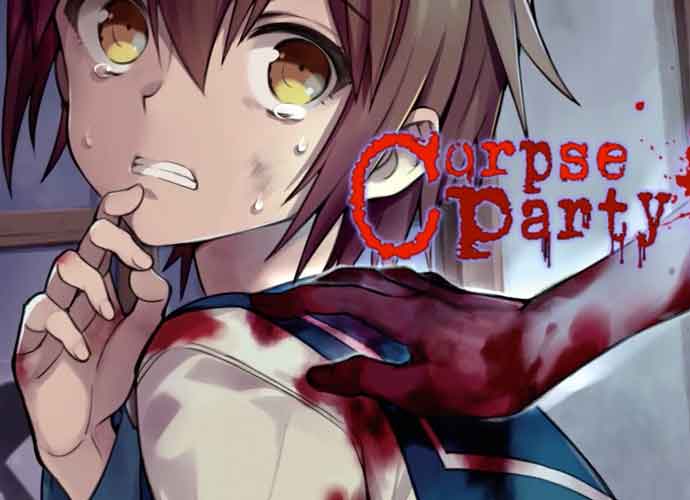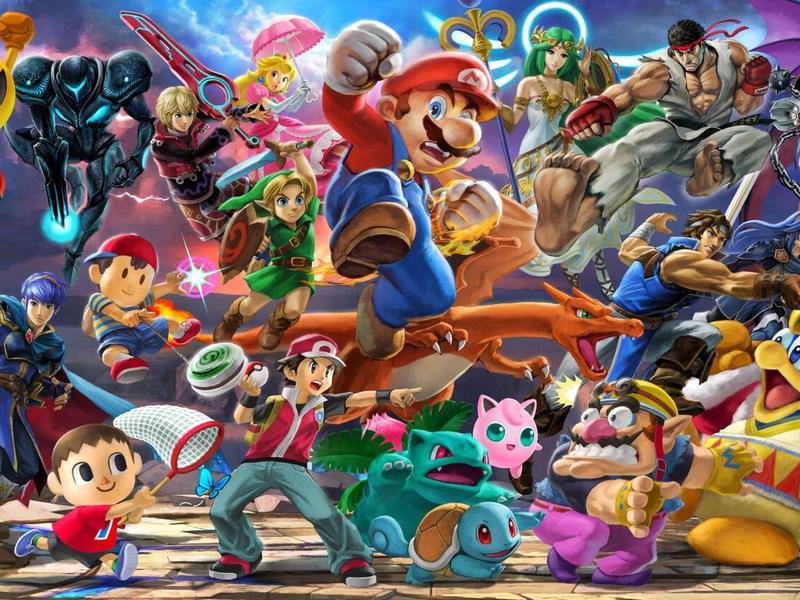‘Corpse Party’ (3DS) Game Review: Come For The Gore, Stay For The Lore

Corpse Party 3DS
The Corpse Party franchise has a long, interesting history. The original, Japan-exclusive Corpse Party was developed by Makoto Kedōin and Team GrisGris, and it launched as a freeware title in 1996. A version of RPG Maker based around the NEC PC-9800 computer series brought the team’s vision to fruition. Following that, it took Team GrisGris years to release another title in the series. However, fans satiated themselves and made a prequel, Corpse Party Zero.
In 2008, Corpse Party: BloodCovered, a remake of the original, was released for the PC. This version was later ported to the PlayStation Portable by 5pb, with several enhancements and a longer title: Corpse Party: BloodCovered: …Repeated Fear. XSEED Games localized and published the PSP’s Repeated Fear, which was the first time the brand officially left Japan. As such, XSEED abandoned the long subtitle and simply released it as Corpse Party. The Repeated Fear iteration of Corpse Party is the one the Nintendo 3DS received, which North America fittingly received this past October. Following the series’ revival in 2008, Corpse Party served as the basis for animation, manga and cinema. Thus, from its humble beginnings, it enraptured fans and proved itself as an IP. So, how good is the definitive version of Corpse Party?
Corpse Party stars a close nit group of friends. Satoshi Mochida is billed as the game’s primary protagonist, although you’ll automatically cycle through different leads as you play.
The game starts as the social circle – seven high schoolers, their teacher and Satoshi’s younger sister – partake in a friendship ritual that will allegedly tie them together forever. Ayumi Shinozaki, a fan of the occult, discovered the ceremony online, and suggested everyone partakes in it as one of their classmates, Mayu Suzumoto, is getting transferred to another school.
Shortly thereafter, the participants are transported to a demonic incarnation of Heavenly Host Elementary School – an establishment that closed 30 years ago – and it becomes their immediate objective to regroup and escape. Complicating matters is the new dimension they find themselves in, as the gruesome Heavenly Host exists in multiple planes. These duplications all share the same general layout and it is possible to shift between them, but making the jump is said to be nigh impossible – and the chances of returning to the living realm are completely negligible.
Heavenly Host is occupied by several spirits. Many of the apparitions roaming the school are rendered as floating flames. Those that radiate a blue light have maintained their tranquil disposition, while those that are ablaze with a red glow are vindictive. Interacting with these souls will divulge details, either concerning your immediate challenges or an anecdote from their previous life. Occasionally, they’ll foreshadow trials that await you.
Other ghastly creatures roam the halls, too, including a clique of cyan-tinted ghost children. Among them is one girl donning a red dress, although there’s more to her than her clothing. You’ll spot her monitoring you throughout the campaign, and her connection to the school is a significant plot point.
Finally, Heavenly Host itself has it out for its guests; it’s explained that the incalculable number of victimized souls have empowered the school with a dark energy, and the school’s oppressive atmosphere curses those who inhabit it by draining their rationality. This can cumulate in a phenomenon known as the “darkening,” which occurs once someone has abandoned all hope.
Corpse Party is an adventure game, which means walking, talking and investigating is its focus. Owing to its RPG Maker roots, Corpse Party is played from an overhead perspective, and your character’s movement is limited to four directions: up, down, left and right. Furthermore, every character, including all encountered enemies, are locked to these same movements. Your party has a limited amount of health, although it’s mainly for show, as you’re more likely to be killed in one shot rather than through a gradual process.
As each protagonist, it’s up to you to thoroughly explore your surroundings. Inspecting objects is your primary method to interact with the realm. Not every object will grant you a response, but some will award you a bit of dialog while others are required to progress. Upon being prompted, your current hero or heroine can add the item to your inventory. Other items can be found inconspicuously lying on the ground, which are detonated by a purple spark.
Heavenly Host is home to several other collectables, including newspaper articles, which offer details concerning the game’s backstory and may be mandatory to read. Additionally, littered across the overworld are deceased students’ name tags.
You save your progress at candles that are strewn about the school. If you’re eager to take a break and there isn’t one in sight, you can make a single-use temporary save. This is an appreciated luxury, as candles can be sparse. Of course, the uncertainty of when you’ll next discover a candle only adds to the tension.
Ultimately, Corpse Party’s gameplay isn’t intricate, but it’s serviceable nevertheless. However, it’s Corpse Party’s narrative and branching endings that compel you to continue forward.
The main story is told through five chapters, all of which house a single “True Ending” and several alternative conclusions. However, just because they’re labeled as the true ending doesn’t mean they’re a good ending. These endings set the stage for the following chapter whilst elaborating on the group’s situation. Chapter 1, for example, closes by cementing a critical point: anyone can be killed.
Each “Wrong Ending” is attainted by improperly proceeding through the campaign, which can entail making an incorrect decision, allowing an essential character to die, failing to keep a vital item around or overlooking a piece of evidence. Corpse Party, both in-game and through its manual, strongly implores you to keep multiple saves so you can easily backpedal once you realize you’re on the wrong track.
While each chapter can be cleared approximately in an hour, you’re destined to make mistakes; you’ll fail to keep everyone alive, you’ll make judgement errors and you’ll miss the finer details, especially as the game sometimes plays with your expectations. It is frustrating once it dawns on you that you messed up, but it does reaffirm Corpse Party‘s ambiance. Besides, if you wish to complete everything within Corpse Party, you’ll need to obtain all the bad endings. And, mercifully, you can speed up the text, which cuts down the time you spend on replays.
Because of its temperament, Heavenly Host is a fantastic environment. Much like the Overlook Hotel from The Shining, Heavenly Host is influencing its story. Discovering the lore behind Corpse Party is satisfying, and it’s enjoyable to see the perspectives of the extended cast, including the living and the dead. Interestingly, Corpse Party does not always display bloodshed. Instead, depending on the character’s death, your only visual as you read the details may be a black screen. This is often done to a chilling effect.
While the troupe isn’t the deepest in terms of characterization, you’ll still root for them to escape with their sanity intact. A suitable ending awaits at the game’s conclusion for those who earn it. Unlockable bonus chapters, four of which are exclusive to the Nintendo 3DS, expand the setting’s history even further. These extra episodes are less elaborate than the main chapters, however.
Corpse Party’s OST is fine. A spirited vocal theme, titled “Shangri-La,” greets the player upon booting up the game. Additionally, most of the other tracks reflect the haunting atmosphere, and occasionally echo our heroes’ drive to escape it. The sound effects work, too. Though, if possible, wear headphones while you play, because the audio was recorded binaurally.
The conversations in the game are fully voiced by a Japanese cast. They portray their characters well, generally delivering an appropriate level of emotion. (And, occasionally, they get to express emotions beyond sheer terror.) Ikue Ōtani was my favorite casting choice, as it was charming to hear her portray a character who’s entirely unlike the one we mainly know her for.
Graphically, Corpse Party’s hand drawn sprites represent its world. Heavenly Host is rendered as the decaying remains you’d expect, whereas the cast is presented in a cartoony, chibi style. I feel the latter is somewhat inharmonious with the former, but the sprites are detailed and well-made. Character portraits are drawn in an anime style, and as these portraits appear whenever dialog is exchanged, you’ll see them a lot.
Corpse Party is not for the faint of heart. Successfully progressing through it requires trial and error, and Heavenly Host’s domineering nature wares out not only the living beings who inhabit the game, but also those who play through it. While there are moments of levity, the morbid circumstances can and will jolt you back on the defensive.
However, if you’re capable of enduring it, you’ll find an extraordinarily memorable experience. The sensation of trepidation and looming endangerment is well-executed, as is the mythos behind Heavenly Host Elementary School. If you’re eager to investigate a solid horror-themed game, Corpse Party is a hoot.






2 thoughts on “‘Corpse Party’ (3DS) Game Review: Come For The Gore, Stay For The Lore”